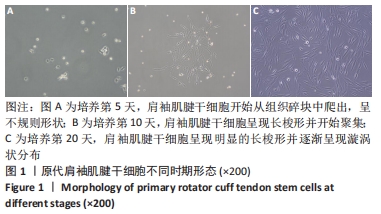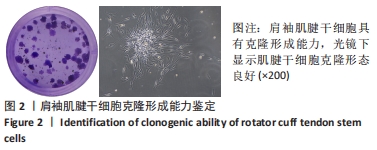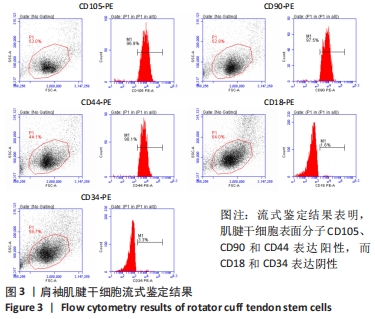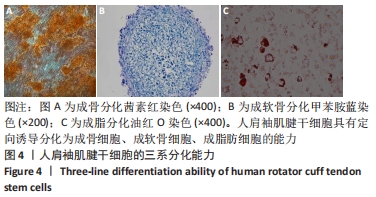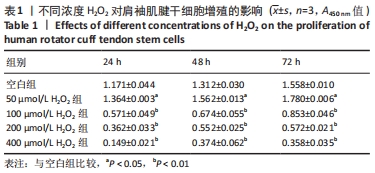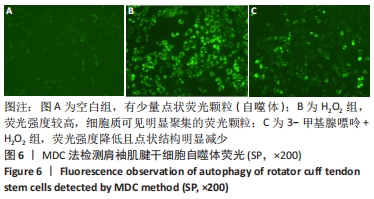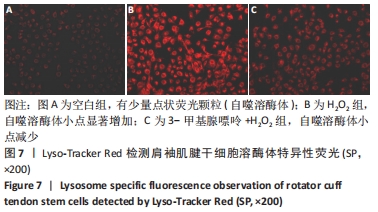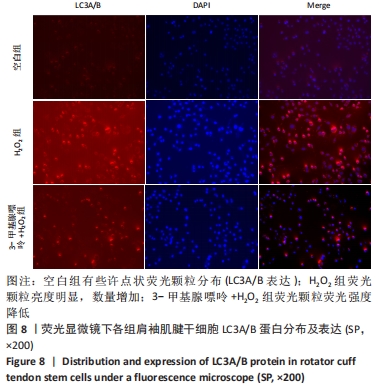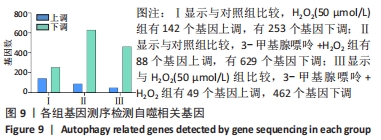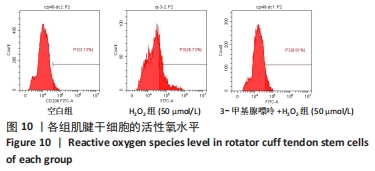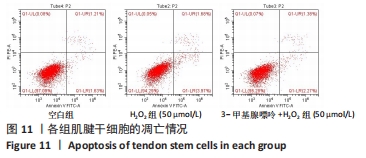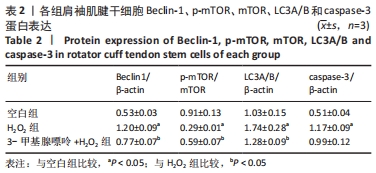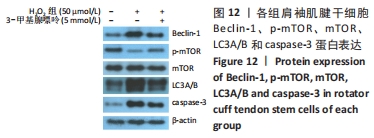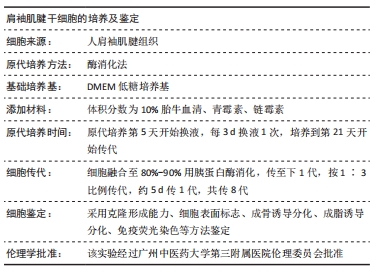[1] 骆勇刚,陈俊,庄万强,等.肩关节镜下不同缝合固定修复技术治疗肩袖损伤的临床疗效[J].局解手术学杂志,2021,30(6):535-540.
[2] 段宝霖,鲍文强,黄佑庆,等.肩关节疼痛神经阻滞疗法中国专家共识(2020版)(第一部分)[J].中华疼痛学杂志,2020,16(5):349-360.
[3] 张阳洋,杨星光,赵金忠.伴有骨质疏松的肩袖损伤治疗进展[J].国际骨科学杂志,2016,37(4):214-218.
[4] 敖英芳.关节镜外科学[M].北京:北京大学医学出版社,2012.
[5] CHUNG SW, OH JH, GONG HS, et al. Factors affecting rotator cuff healing after arthroscopic repair: osteoporosis as one of the independent risk factors. Am J Sports Med. 2011;39(10):2099-2107.
[6] RUDZKI JR, ADLER RS, WARREN RF, et al. Contrast-enhanced ultrasound characterization of the vascularity of the rotator cuff tendon: age- and activity-related changes in the intact asymptomatic rotator cuff. J Shoulder Elbow Surg. 2008;17(1 Suppl):96S-100S.
[7] SUGAYA H, MAEDA K, MATSUKI K, et al. Repair integrity and functional outcome after arthroscopic double-row rotator cuff repair. A prospective outcome study. J Bone Joint Surg Am. 2007;89(5):953-960.
[8] WLASCHEK M, SCHARFFETTER-KOCHANEK K. Oxidative stress in chronic venous leg ulcers. Wound Repair Regen. 2005;13(5):452-461.
[9] 尚小可,郑君,余子杨,等.肩袖损伤的处理临床实践指南(2019年)解读[J].中华肩肘外科电子杂志,2021,9(2):103-111.
[10] LEE S, HWANG JT, LEE SS, et al. Greater Tuberosity Bone Mineral Density and Rotator Cuff Tear Size Are Independent Factors Associated With Cutting-Through in Arthroscopic Suture-Bridge Rotator Cuff Repair. Arthroscopy. 2021;37(7):2077-2086.
[11] YAMAGUCHI K, DITSIOS K, MIDDLETON WD, et al. The demographic and morphological features of rotator cuff disease. A comparison of asymptomatic and symptomatic shoulders. J Bone Joint Surg Am. 2006; 88(8):1699-1704.
[12] 邓炜聪,曾勤,洪钟源,等.富血小板血浆治疗肩袖损伤术后的疗效:随机对照试验Meta分析[J].创伤外科杂志,2021,23(4):276-284.
[13] 韦继南,李永刚,耿锐,等.LafosseⅠ型肩胛下肌损伤修复与否对前上方肩袖损伤修复疗效的影响[J].中华骨科杂志,2020,40(23): 1612-1622.
[14] SCHÄFER M, WERNER S. Oxidative stress in normal and impaired wound repair. Pharmacol Res. 2008;58(2):165-171.
[15] 冯加劲,向明,赵磊.全层肩袖损伤的分类、损伤机制及修复方法的研究进展[J].世界最新医学信息文摘,2019,19(20):132-133.
[16] 陈亚敏,文政芳,王国霞.褪黑素对缺氧缺血性脑损伤新生大鼠皮层氧化应激的影响[J].神经解剖学杂志,2021,37(3):305-309.
[17] 赵智龙,丁国萍,胡媛,等.银质针对大鼠肩袖冈上肌骨-肌腱结合部位损伤的修复作用[J].宁夏医学杂志,2021,43(6):535-538.
[18] 余静雅,戴燕,石玉兰.慢性伤口细菌生物膜的研究进展[J].华西医学,2021,36(5):686-690.
[19] 李凯群.高胆固酵通过激活ROS介导的NF-кB通路抑制肌腱干细胞的腱系分化[D].广州:南方医科大学,2019.
[20] 谭济阳. 肩关节镜下治疗合并骨质疏松的肩袖损伤的疗效分析[D].扬州:扬州大学,2019.
[21] LANG JY, MA K, GUO JX, et al. Oxidative stress induces B lymphocyte DNA damage and apoptosis by upregulating p66shc. Eur Rev Med Pharmacol Sci. 2018;22(4):1051-1060.
[22] TANG C, LIANG J, QIAN J, et al. Opposing role of JNK-p38 kinase and ERK1/2 in hydrogen peroxide-induced oxidative damage of human trophoblast-like JEG-3 cells. Int J Clin Exp Pathol. 2014;7(3):959-968.
[23] 宋慧芳,谈佳音,康毅,等.低氧预处理增强老年人骨髓间充质干细胞条件培养基对H9C2细胞氧化应激损伤的保护作用[J].中国组织工程研究,2022,26(1):1-6.
[24] 付国建,尹峰.干细胞治疗慢性巨大肩袖损伤的研究进展[J].同济大学学报(医学版),2019,40(6):877-883.
[25] 廖昊燃,余伟林,胡庆翔,等.生物学方法促进肩袖腱骨愈合研究进展[J].中华肩肘外科电子杂志,2021,9(2):183-186.
[26] 刘嘉鑫,安丽萍,张广瑞,等.促进肩袖止点腱骨愈合的研究进展[J].中国骨伤,2020,33(7):684-688.
[27] BI Y, EHIRCHIOU D, KILTS TM, et al. Identification of tendon stem/progenitor cells and the role of the extracellular matrix in their niche. Nat Med. 2007;13(10):1219-1227.
[28] LIANG C. Negative regulation of autophagy. Cell Death Differ. 2010; 17(12):1807-1815.
[29] XIE M, MORALES CR, LAVANDERO S, et al. Tuning flux: autophagy as a target of heart disease therapy. Curr Opin Cardiol. 2011;26(3):216-222.
[30] CHERRA SJ 3RD, KULICH SM, UECHI G, et al. Regulation of the autophagy protein LC3 by phosphorylation. J Cell Biol. 2010;190(4): 533-539.
[31] DJAVAHERI-MERGNY M, MAIURI MC, KROEMER G. Cross talk between apoptosis and autophagy by caspase-mediated cleavage of Beclin 1. Oncogene. 2010;29(12):1717-1719.
[32] 梁桂洪,黄和涛,潘建科,等.龙鳖胶囊含药血清对YAP抑制剂诱导人软骨细胞凋亡的保护作用及机制研究[J].中国药房,2021, 32(12):1442-1448.
[33] KANG R, ZEH HJ, LOTZE MT, et al. The Beclin 1 network regulates autophagy and apoptosis. Cell Death Differ. 2011;18(4):571-580.
[34] 杜洪,夏万松,韦四喜,等.长基因间非编码RNA963不同可变剪接体在胃癌细胞系中的表达和作用[J].贵州医科大学学报,2021, 46(7):759-765.
[35] LEVINE B, MIZUSHIMA N, VIRGIN HW. Autophagy in immunity and inflammation. Nature. 2011;469(7330):323-335.
[36] YOSHIMORI T. Autophagy: a regulated bulk degradation process inside cells. Biochem Biophys Res Commun. 2004;313(2):453-458.
[37] 于海,刘清华,肖培伦,等.Beclin-1,LC3A/B和mTOR在肝癌中的表达及临床意义[J].安徽医药,2018,22(2):246-249.
[38] PARGANLIJA D, KLINKENBERG M, DOMÍNGUEZ-BAUTISTA J, et al. Loss of PINK1 impairs stress-induced autophagy and cell survival. PLoS One. 2014;9(4):e95288.
[39] KAMINSKYY VO, ZHIVOTOVSKY B. Free radicals in cross talk between autophagy and apoptosis. Antioxid Redox Signal. 2014;21(1):86-102.
[40] YAN X, WANG L, YANG X, et al. Fluoride induces apoptosis in H9c2 cardiomyocytes via the mitochondrial pathway. Chemosphere. 2017; 182:159-165.
|

